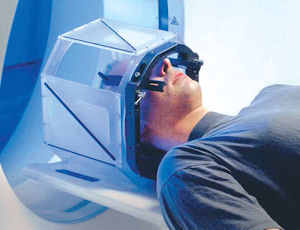It’s no secret that the price of medical services can vary drastically from one provider to the next. The disparities are especially prevalent in imaging services, where an MRI at a hospital can run more than $2,000 while the same procedure at a standalone facility can cost as little as $500. An Anthem Blue Cross program launching in the San Fernando Valley and the Greater Los Angeles region will make consumers more aware of such price disparities and encourage members to choose the less costly option. Under the new Cost and Quality Program, Anthem employees will actually call members to inform them of their choices prior to authorizing an imaging service. Members will still be able to choose the provider recommended by their doctor, but they will have more information about their options, said Anthem Blue Cross Spokesman Darrel Ng. Other health plans have programs that make consumers aware of price disparities, or steer them toward lower-priced options. Anthem’s program to proactively call members appears to be unique. “Often people don’t know that the same test could cost hundreds or even a thousand dollars more at one facility compared to another,” Ng said “We think our members would be interested in knowing this.” Ng said Anthem calls beneficiaries with the pricing information because it’s a complex issue better suited to a phone call than an email or a letter. Bringing price transparency to the medical field is certainly laudable, but some observers caution that health plans may want to step lighter in how they make this information available. James Garrison, chairman of the health care committee of the Valley Industry & Commerce Association and president of Glendale-based Pacific Federal Insurance Corp. — which specializes in employee benefit plans — said he is a strong supporter of price transparency in health care. But insurance companies should be aware of privacy concerns. “I’d be concerned about getting a phone call — or my family getting a phone call — from Anthem about a procedure,” he said. “If Anthem calls my home and someone else answers the phone, they might ask, ‘What’s going on?’” Another concern is health plans steering patients to certain providers. It puts health plans “a little closer to the practice of medicine,” said Dr. Howard Berger, CEO of Radnet Inc., a Santa Monica-based national company with 20 imaging centers in the greater Valley region. Anthem has used its new program to call attention to price disparities in imaging services in a handful of other markets nationally, most notably Ohio. The idea is to help consumers reduce their own out-of-pocket costs, Ng said, and hopefully to help drive down overall health care costs. “We can’t say that this alone will reduce costs,” Ng said. “But programs like this and other initiatives will help.” In other markets Anthem was able to convince about a fifth of its members to switch to a lower-cost, equally qualified imaging center, Ng said. The vast majority of beneficiaries, however, stick with the doctor-recommended center. “It’s understandable given the bond between physicians and patients,” he said. “Even so, if just 10 percent of beneficiaries switch (to a lower-cost provider), they are saving money.” Garrison worries, however, that the savings won’t always accrue to members, or employers. “Eventually it may trickle down, but the immediate savings is to the health plan,” Garrison said. Anthem believes that consumers will be the primary beneficiaries of the savings. If the difference is $500, a beneficiary with a 20 percent co-pay could save $100 by switching,” Ng said. The biggest price difference tends to be between hospital-based providers and independently owned imaging centers. Hospitals sometimes charge more for imaging to make up for unprofitable services. Hospital-based imaging centers have argued that they charge more because their equipment is of a higher caliber, or because they employ more highly trained technicians. Standalone imaging centers would beg to differ. Dr. Berger said his independent centers offer patients a more pleasant experience at substantially lower cost. He said his company has begun to gain patients from plans’ efforts to raise awareness about price disparities. “Like anything, change is slow, but we’ll gain steam as more plans become active and aggressive about helping members identify the disparities.”
